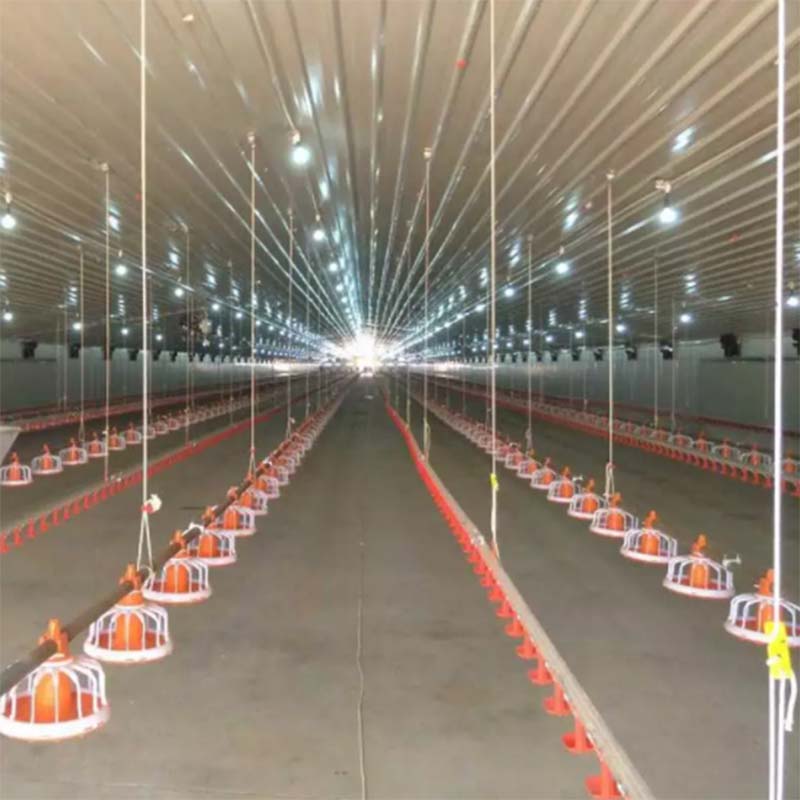Effective Cage Solutions for Optimal Layer Poultry Production and Welfare Management
សីហា . 14, 2024 13:24 Back to list
Effective Cage Solutions for Optimal Layer Poultry Production and Welfare Management
Cages for Layer Poultry A Comprehensive Overview
Layer poultry farming is an essential component of the global agricultural landscape, primarily focused on the production of eggs. One of the critical aspects of layer poultry farming is the housing system used. Among various housing solutions, cage systems have been widely adopted due to their efficiency and the benefits they offer in terms of management, biosecurity, and egg production. This article delves into the advantages of cages for layer poultry, the types of cages available, and the ongoing debates surrounding their use.
Advantages of Cages for Layer Poultry
Cage systems, particularly battery cages, are designed to house hens in a manner that enables high-density living while facilitating ease of management. One of the significant advantages of using cages is the optimization of space. Cages allow farmers to keep a larger number of birds in a smaller area compared to free-range or barn systems. This efficient use of space helps reduce the overall cost of production, making eggs more affordable for consumers.
Furthermore, cages offer enhanced protection from predators and environmental hazards. By keeping hens enclosed, farmers can significantly reduce the risk of diseases and parasites that often thrive in free-range environments. This controlled setting also supports better biosecurity measures, as it minimizes contact with wild birds and other animals that may carry diseases.
Cages also simplify the management of the flock. They facilitate easier monitoring of the hens' health, nutritional needs, and egg production. Additionally, automatic feeding and watering systems can be efficiently integrated into cage setups, further reducing labor costs and ensuring that all hens have equal access to food and water.
Types of Cages
There are various types of cages used in layer poultry farming. The most common include
cages for layer poultry

1. Battery Cages These are small, stacked cages that house multiple hens, typically two to five per cage. While battery cages maximize space, they have come under fire for animal welfare concerns due to the limited movement allowed for the birds.
2. Enriched Cages Designed to address some welfare concerns associated with battery cages, enriched cages provide more space and additional features like perches, nesting boxes, and scratching areas. They allow hens to engage in more natural behaviors while still benefiting from the advantages of a cage system.
3. Colony Cages These cages are larger units that house a group of hens, allowing for greater social interaction and movement compared to battery cages. Colony cages strike a balance between productivity and animal welfare, making them a popular choice in many modern farms.
Ongoing Debates and Challenges
Despite their efficiency, the use of cages in layer poultry farming has sparked significant debate, particularly around animal welfare issues. Critics argue that conventional battery cages severely restrict the natural behaviors of hens, leading to distress and poor welfare outcomes. This has prompted some countries and regions to implement stricter regulations or outright bans on battery cages, leading to a shift towards enriched and alternative housing systems.
As consumer demand for ethically sourced eggs grows, farmers face pressure to adapt their practices. Balancing productivity, animal welfare, and consumer expectations is a complex challenge that the industry must navigate.
Conclusion
Cages for layer poultry offer numerous advantages that have made them a prevalent choice in egg production. Their efficiency in managing flocks, reducing disease risk, and lowering production costs are appealing to farmers. However, as welfare concerns gain prominence, the poultry industry is at a crossroads, needing to evolve while balancing economic viability and ethical practices. Continuous innovation and commitment to welfare standards will be essential in shaping the future of layer poultry farming.
-
High Performance Exhaust Fan – Efficient Ventilation Solutions for Home
NewsJun.10,2025
-
High-Quality Gestation Pen for Sows Durable Mobile Pig Pen & Simple Pig Pen Solutions
NewsJun.10,2025
-
High Quality Rabbit Cage Double Tier Designs & Welded Wire Mesh Supplier
NewsJun.10,2025
-
Floating Fish Feed Machine - High Efficiency Floating Fish Feed Extruder for Small Scale Production
NewsJun.10,2025
-
Premium Poultry Housing Solutions Mobile & Commercial Free Range Options
NewsJun.10,2025
-
Industrial FRP Fans Corrosion-Resistant Blades & Centrifugal Systems
NewsJun.09,2025






